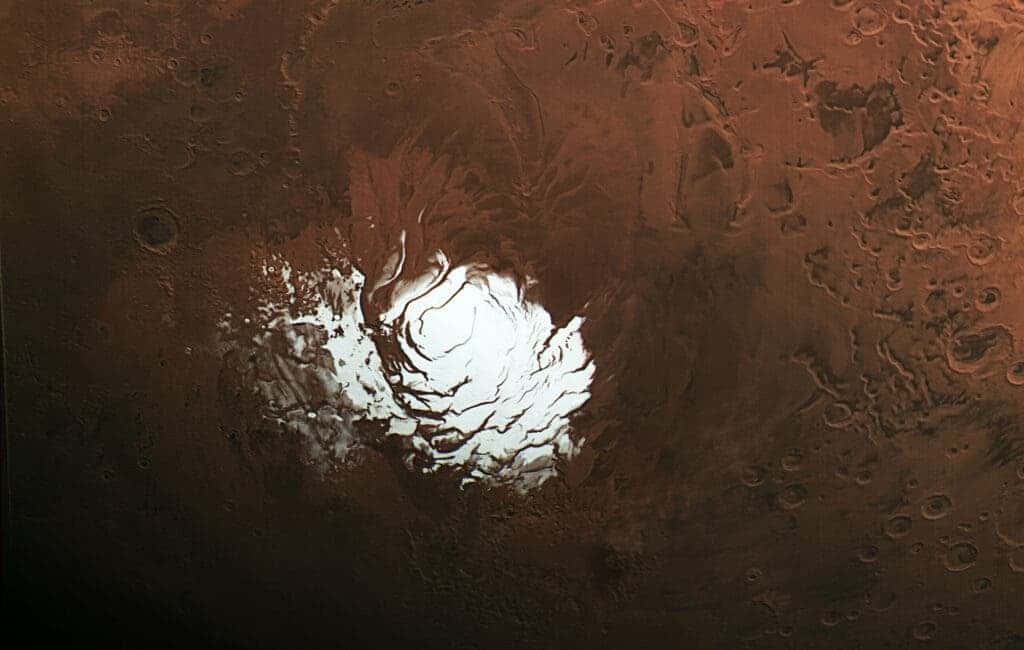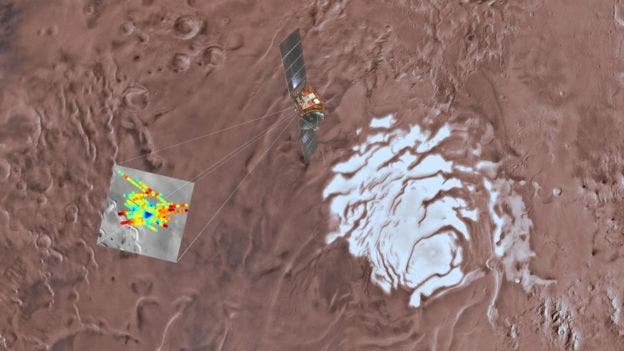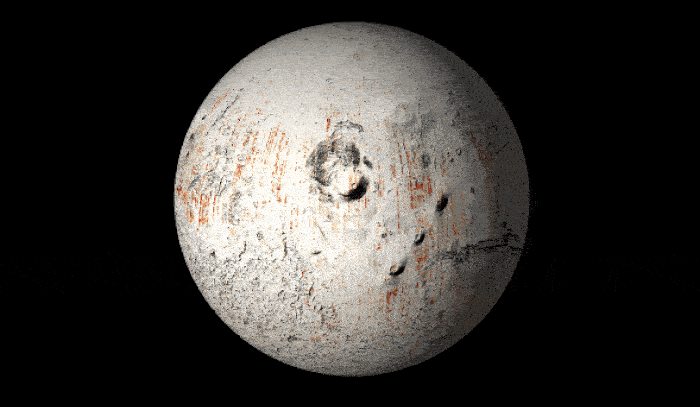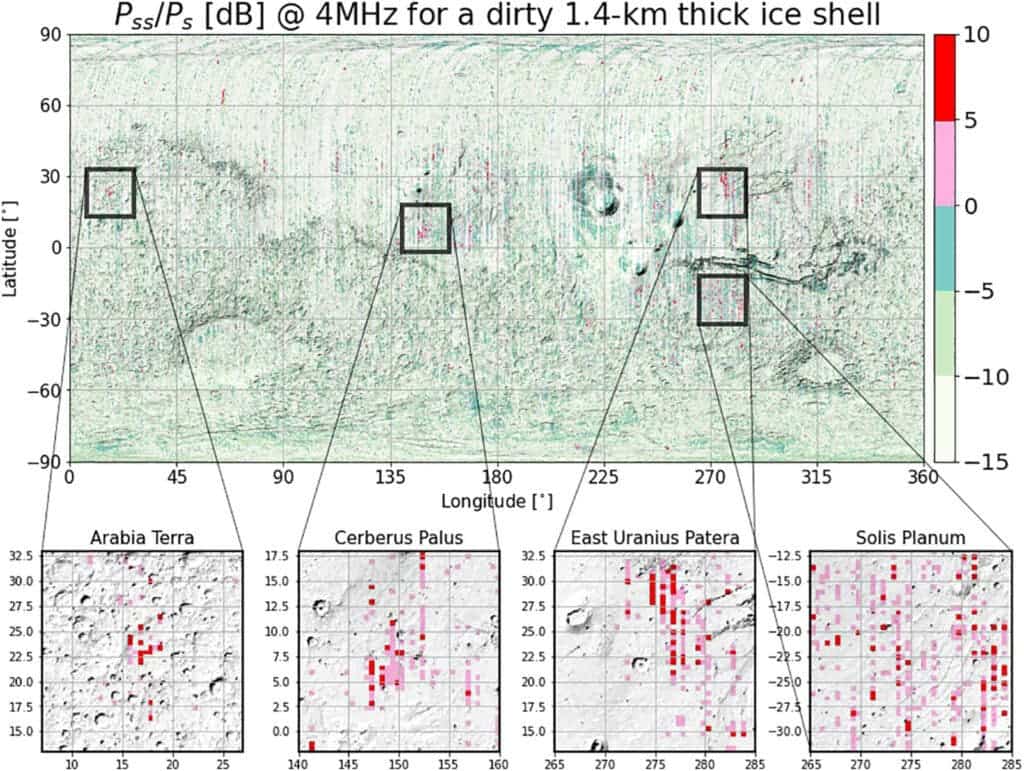
In 2018, a NASA announcement got us all excited. The study, based on an interpretation of radio data, suggested that there may be liquid lakes under the ice cap at Mars’s south pole. “We interpret this feature as a stable body of liquid water on Mars,” the authors wrote in the study.
“Here, we aim to determine if Martian terrains today could produce strong basal echoes if they were covered by a planet-wide ice sheet,” the researchers write in their paper.
“We find that some existing volcanic-related terrains could produce a very strong basal signal analog to what is observed at the South polar cap. Our analysis strengthens the case against a unique hypothesis based solely on liquid water for the nature of the polar basal material,” they add.
Water signals
Researchers have put several scientific instruments on and around Mars. Among them is MARSIS (Mars Advanced Radar for Subsurface and Ionosphere Sounding) — a low-frequency radar developed by researchers working in Italy. Radar waves from MARSIS can penetrate through ice (and to a lesser extent, through rocks), offering clues about the surface as well as the subsurface of the Red Planet.
When the radar waves encounter a different surface (for instance, when they pass from ice to rocks), a part of their energy is reflected back. Based on this type of data, certain deductions can be made about the layers through which the waves passed — but the results are not always clear.
For instance, the 2018 study concluded that a “shiny” patch (a patch that is very reflective to radar data) close to Mars’ frozen south pole could indicate a subsurface lake, 1.4 kilometers (0.87 miles) under the ice.

If this were indeed the case, and Mars were to host a network of such lakes, it would be groundbreaking. Not only would this mean that life may still exist on Mars, but it could also be very helpful in the case of a human Martian colony. But right from the get-go, this interpretation had critics.
For instance, a 2019 lab study that simulated the conditions on Mars concluded that these areas are simply too cold to host liquid water, even salty liquid water (which stays liquid at colder temperatures). Instead, the authors of that study suggested that the reflective patch is a clay mass.
Now, a new study suggests that neither of those is true, and the patches are simply volcanic rocks.
A song of rocks and water
The new study, led by planetary scientist Cyril Grima of the University of Texas Institute for Geophysics, opted for a clever trick to explain the nature of the reflective patch. They wondered what they’d see if they “covered” all of Mars with an ice sheet, just like at the South Pole? In other words, if we replicated the conditions where the reflective patch was discovered all over the planet, would we see any others like it?
The answer turned out to be ‘yes’.

Researchers found a bunch of reflective patches scattered across the Red Planet. The researchers overlaid these patches with a map of the Martian geology, noting that they neatly matched the outline of volcanic rocks.
This idea makes sense, because just like water and clay are reflective, so too are volcanic rocks. Also, Mars has a lot of volcanic rocks, not all of which have been mapped yet; it’s possible that such an area may lie around the south pole, unbeknownst to researchers.
“I think the beauty of Grima’s finding is that while it knocks down the idea there might be liquid water under the planet’s south pole today, it also gives us really precise places to go look for evidence of ancient lakes and riverbeds and test hypotheses about the wider drying out of Mars’ climate over billions of years,” says planetary scientist Ian Smith of York University in Canada, who led the frozen clay study.

Ultimately, while this latest study suggests the reflective patches are volcanic rocks, it’s possible that the last word is still out. The odds of them being liquid water seem to be quite slim at the moment, but whether they’re volcanic rocks, clay, or something else entirely is not at all clear. Isaac Smith, a Mars geophysicist at York University who was not involved in either study, believes this is a good example of how science should work.
“Science isn’t foolproof on the first try,” said Smith, who is an alumnus of the Jackson School of Geosciences at UT Austin. “That’s especially true in planetary science where we’re looking at places no one’s ever visited and relying on instruments that sense everything remotely.”
Hopefully, future missions and studies will help shed more light on what lies under the Martian surface.
The study was published in Geophysical Research Letters.



